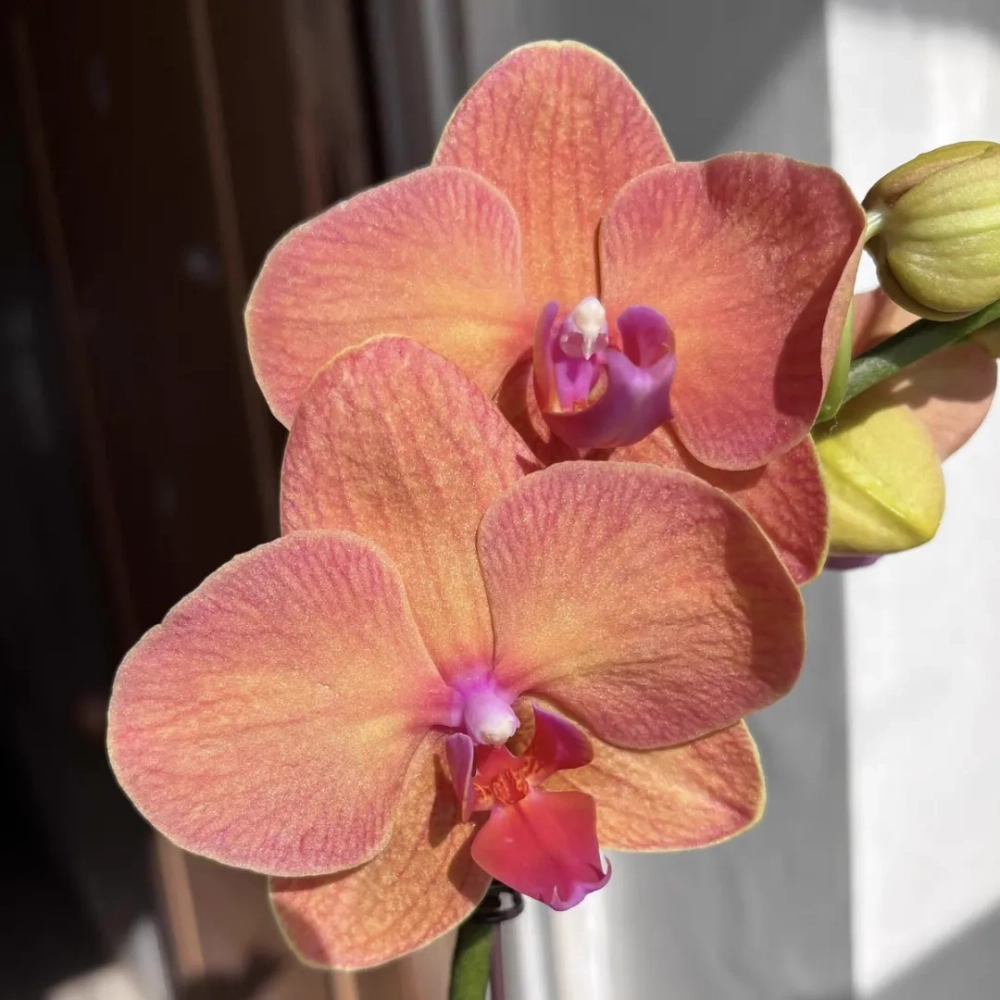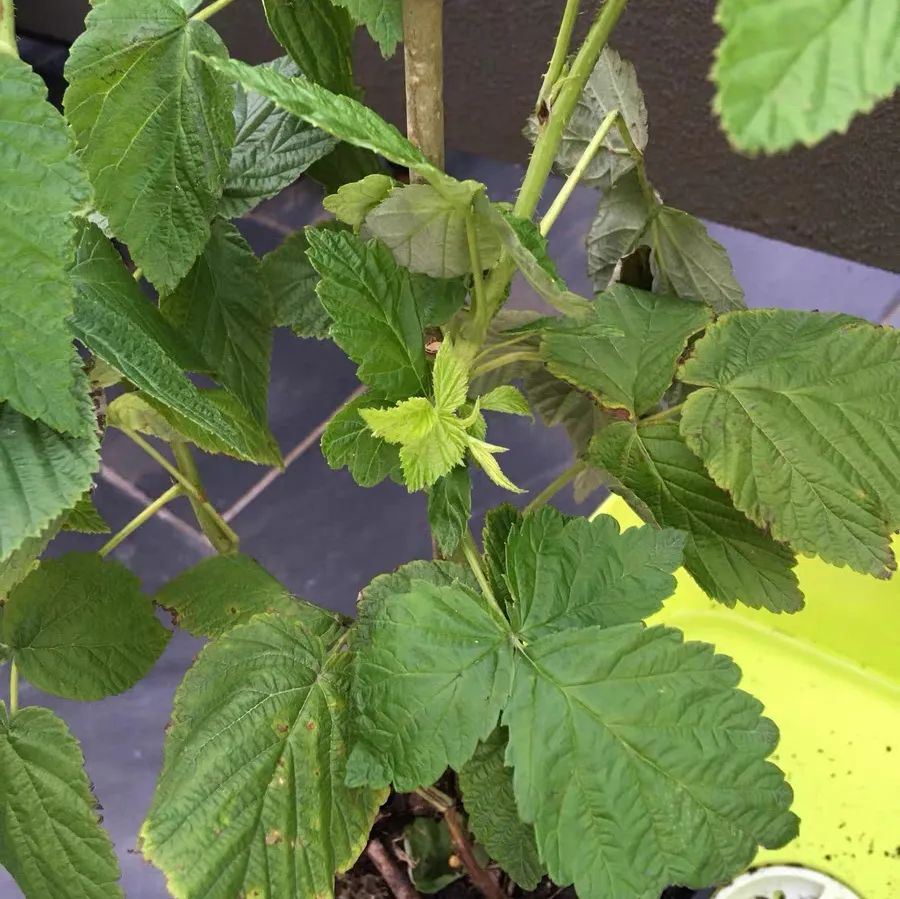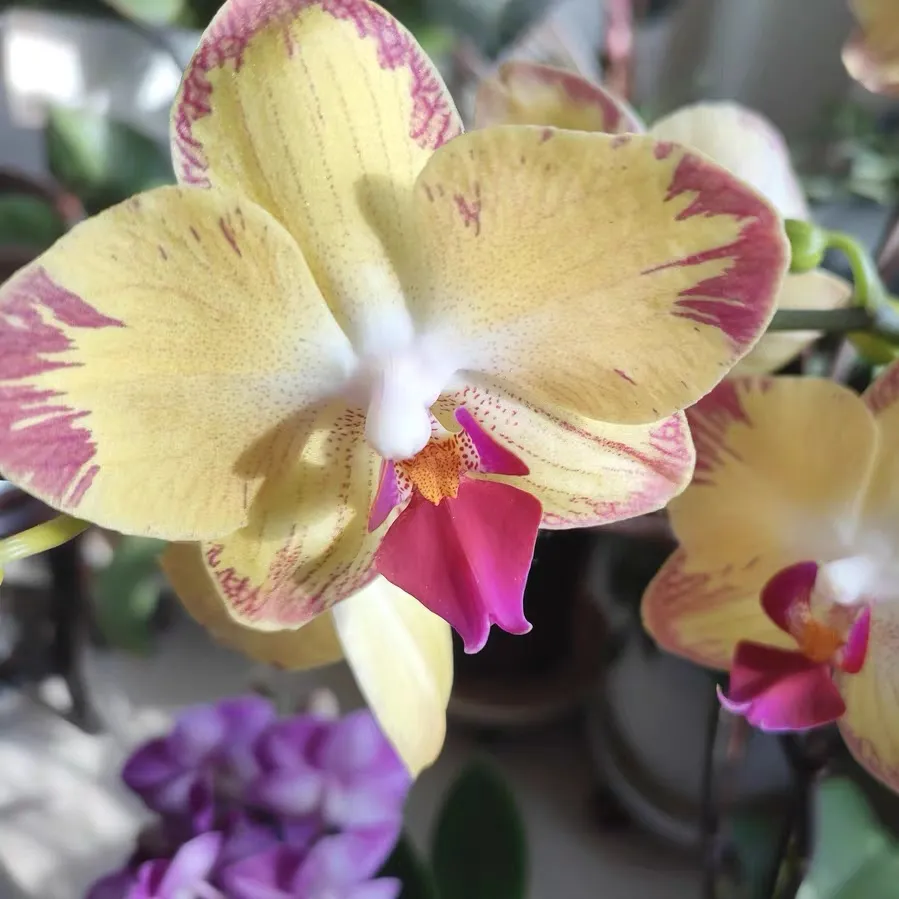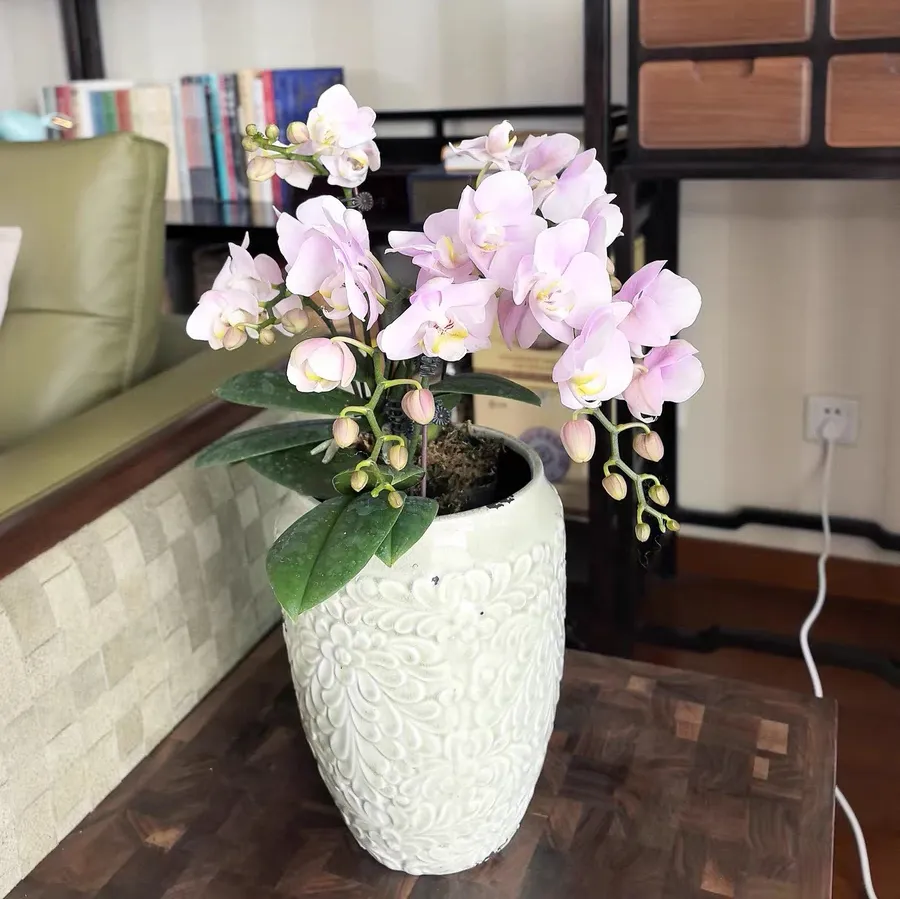Today, I'd like to recommend to you the Phalaenopsis "Tangerine" which comes with an inherent noble filter! As a rare medium to large-flowered variety in the Hermès orange color series, you'll be struck by its high-saturation orange color at the first glance! Different from the Phalaenopsis "Kumquat" which has a gradient of orange-red color, the Phalaenopsis "Tangerine" features a pure high-saturation orange. What's even more amazing is that its petals have a golden border, with a faint golden halo on the edge, and it is paired with clear and delicate textures. Placing it at home can instantly enhance the style of the space.
The flowering period of the Phalaenopsis "Tangerine" can usually reach 3 to 6 months. If it is well maintained, it can even bloom for half a year. Moreover, its flower quantity is also considerable. A single flower spike can bear 8 to 12 flowers, and the orange-red flowers hang all over the branches, fully creating a great atmosphere.
Many novice flower lovers are worried that they can't take good care of Phalaenopsis. However, the Phalaenopsis "Tangerine" is of moderate difficulty to grow. As long as you master a few small tips, you can easily make it bloom abundantly.
**Maintenance Tips**
**Light**: The Phalaenopsis "Tangerine" doesn't like to be directly exposed to the sun, as it is likely to burn the leaves and flowers. Place it by the south-facing or east-facing window at home and draw the sheer curtain, then it can enjoy the gentle scattered light. In winter, when the light is weak, you can let it get more sunlight appropriately to help it grow better.
**Temperature**: The most suitable temperature for the growth of the Phalaenopsis "Tangerine" is 15 - 30°C. Don't let the temperature drop below 10°C in winter, and remember to ventilate and cool it down when the temperature exceeds 32°C in summer.
**Humidity**: It is best to keep the humidity at 60% - 80%. You can place a humidifier beside it or add some water to the tray to increase the air humidity.
**Watering**: Don't water it too frequently. Insert your hand 2 - 3 centimeters into the substrate, and water it thoroughly when you feel it's dry. Water it once a week in spring and autumn, once or twice a week in summer, and once every 10 - 15 days in winter. When watering, pour the water slowly along the edge of the pot, and don't let water accumulate in the center of the leaves, as it is likely to cause the center to rot.
**Fertilization**: Use a special liquid fertilizer for orchids 1 to 2 times a month during the growing period, diluted 1000 times. Before the flowering period, switch to phosphorus and potassium fertilizers, such as potassium dihydrogen phosphate, diluted 1500 times, and apply it once every two weeks, which can make the flowers larger and more gorgeous. In winter, when it is dormant, reduce or stop fertilization.
**Precautions**
1. Don't move it frequently. Phalaenopsis is very sensitive to environmental changes, and changing its position often is likely to cause the flower buds to drop.
2. Check the leaves regularly to see if there are small insects like spider mites and scale insects, and deal with them in time if found.
3. Cut off the withered flowers promptly after they fade. Leave 2 to 3 nodes on the flower spike starting from the base, and maybe it can bloom again.
Is the Phalaenopsis "Tangerine" beautiful?

Share with
Tagged in :




Leave a Reply